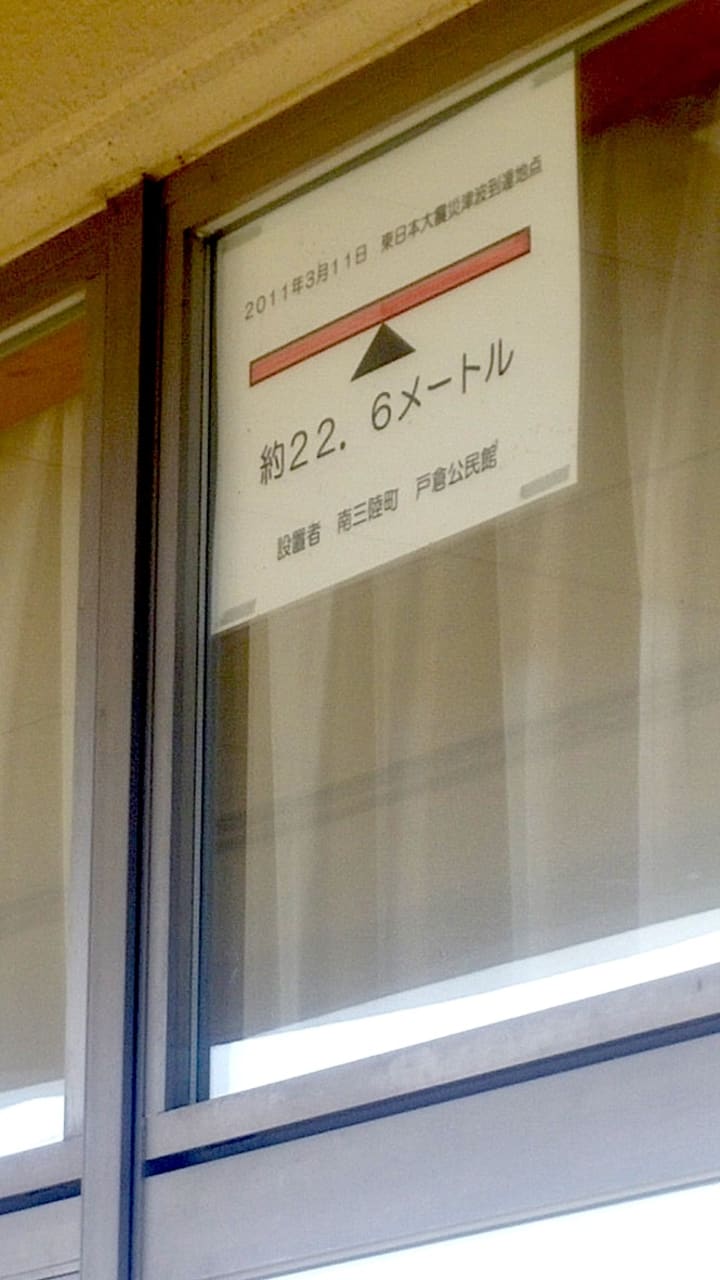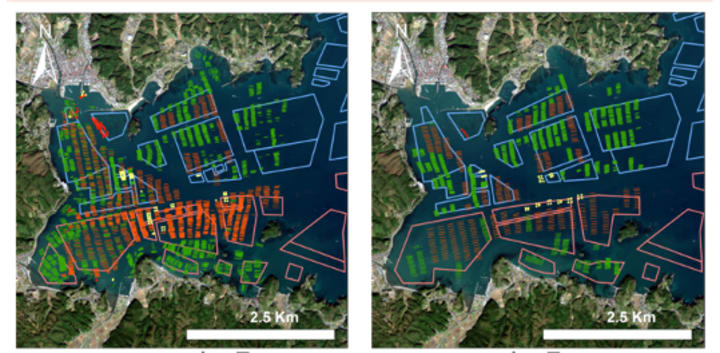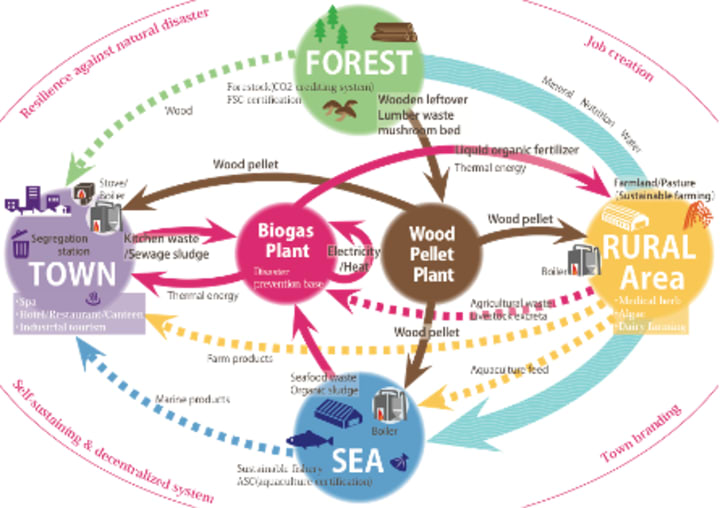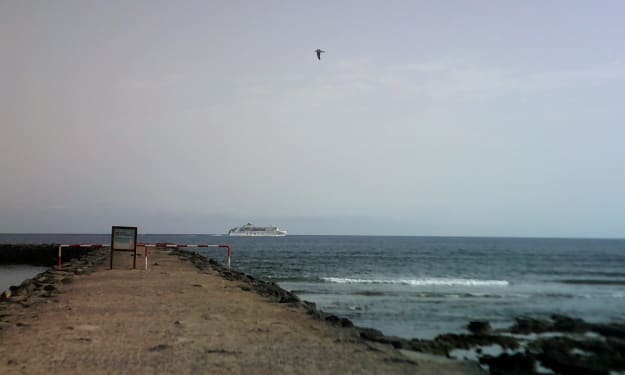Minamisanriku and its people
Recovering to lead the world by example.

Visiting Minamisanriku brings us to the core of the Tsunami affected area. Travelling on the bus from Sendai fills your soul when viewing the images of manicured gardens and ancient architectural practices. Dappled in the colour and light of November, the shift in the landscape came as construction works flooded our view. Everything new and machinery working on every horizon. Modern street signs freshly painted and traffic lights obeying orderly commands. The reality the Miyagi prefecture still faces, struck us hard as we entered the devastation zone even 7 and a half years after the event. What we came to learn from the survivors was not just a story of sadness but one of a triumphant recovery that showed the resilience of a people with enough foresight to understand that this event was more than simply dismantling. It presented an opportunity to review previous community practices and utilise the opportunity given to create a more sustainable life style. They are recovering together with redesigned infrastructure and planning from the clean slate this tragedy gave them.
Sosha Mitsununga Smith is uniquely gifted to be able to translate the spoken story of the Minamisanriku survivors from Japanese to English. He moved to the area to teach, translate the language and participate in voluntary activities that serve the reviving community. His first translation set the scene of how the global community reached out to the residents in ways that were both historic and contemporary.
The President of Chile gifted the people of Minamisanriku a Moai statue 30 years after the Tsunami that originated from the earthquake of his country had hit the Japan shores in 1960, on behalf of the Easter Island group. He again visited the location where the more recent tsunami devastated the residents in the area of the Miyagi prefecture to once more gift the people another of these significant statues on May 25th, 2 years after the March 11th 2011 disaster.

The priestess Mayumi Kudo of Kaminoyama Hachimangu Shrine speaks of the people themselves shifting the temple area “in one piece and in one day” by the labourers available to them, to the safety of higher ground from where the 1960 tsunami had hit. Physical story telling that resonates upon a population much like the hope that is offered by the making of 1000 paper cranes in a single sitting to ensure ones’ wishes will come true. Such as the many that were sent to the Minamisanriku people in the wake of this most recent tragedy.

The Minamisanriku town itself is bordered by watershed. Due to the features of this geographical landscape, to simply look to the Pacific Ocean to view the coming of the enormous wave that was predicted to be 4 metres high would prove to be naïve on 2 accounts. The wave that was to hit was in fact 16 metres high at the base level of the township and it didn’t show itself only from its Pacific Ocean origin but as the dominant water body hit and swirled around the land mass, those scuttling for higher ground were surprised by masses of water presenting from 3 different directions. The thrust height of the water level, as it navigated narrower channels, elevated to 22.6 metres as one of the previous school location buildings still shows.

According to the Centre for Sustainable Society Representative Director Dazai Akihiro, in the location of Minamisanriku alone, “there were 619 fatalities, 216 people missing, 9,746 evacuees and 33 Evacuation Sites”. The actual number of fatalities and missing persons in their entirety was to be realised as 18 000 and the missing people are still searched for on the 11th day of every month. “The population figures changed 29% from 17 429 people in 2010 to 12 375 in 2015. A reduction of 5054 people.” explained the Director.

What is arguably the most inspiring aspect within the recovery of this community is the self-imposed reduction to the aquaculture farming density by 2/3 of its original capacity. The farms were distributed in a non-discriminatory manner irrespective of previous lease occupancy. Recognising that the previous practices were not sustainable for the environment or its workers and seeking to synergise with the prevailing environmental conditions in all their unique qualities, has these people rise to develop an aquaculture farming model that may be utilised by other communities around the globe. The “Togurakko Oyster” of the Togura District (as pictured above) came to be the first in Japan to receive the Aquaculture Stewardship Council Certification (March 2016).
The Minamisanriku cedar forest management (largely owned and managed by the company Sakyu) received the first Forest Stewardship Council certification in the prefecture (October 2015). The vision that the holistic management of the environment is of the utmost importance has the prefecture recognised with these 2 Sustainability awards within a year of each other which, for these awards, has been unprecedented anywhere in the world.

At the waterfront alone the benefits of the foresight of these people can be realised in the reduced affects and improvements. Reductions became apparent in cost to materials and fuel in the aquaculture zones, future disaster risk exposure (commercial and residential zones completely separated), harvest gestation period and effects on the environment. The improvements came as a result of more critical observations of how the environmental conditions ebb and flow. Understanding how the bays current cycles gave way to more sensible design plans that produced a healthier aquatic environment and more effective work practices which lead to the betterment of working conditions while affording the workers more holidays.
People like these teach us of the capacity of the human spirit to survive and thrive. If all in any community are considered, offered an opportunity to contribute to what they consider to be important and work together, there is no end to the ability to achieve their goals. If the world drew from the model this community have rendered for resilience and sustainability, then our ever-evolving global nation may have a chance at survival.
Acknowledgements
Dr Alecia Belgrove has made the experience that the combined discipline undergraduate students from the three Deakin University Campuses and University of Tasmania possible. Her expertise in the marine field and understanding of both Japanese culture and language is irreplaceable.
Sosha Mitsununga Smith has made it possible to understand the first-hand experiences of the survivors of the March 11, 2011 tragedy in the detail it deserves.
Mr Ken Jiendo is to be recognised for the trust he put in us to respect the sensitivity of his personal experience and subsequent continuing recovery from such a devastating experience.
Director Dazai Akihiro is to be commended for his presentation that offered enormous detail of the Minamisanriku community’s successful model for sustainable environmental practices.
Priestess Mayumi Kudo of Kaminoyama Hachimangu Shrine is acknowledged for the generous offering to allow 20+ visitors to enter the temple in her care and trust us to enter while engaging in learning of this sacred space and traditional practices.
Thanks to the people of Minamisanriku who offered their stories and opened their hearts to a bus load of strangers whose lives are now changed, with a bit of luck, for the benefit of the global greater good.
To my cohort, without you The Japan Marine and Aquaculture Study Tour could have been far less extraordinary than it was but you all helped to ensure this has become my number 1 life changing experience.
Finally, without funding from the New Colombo Plan Scholarship, this would not have been possible. Thank-you Ly Tran, Mark Rahimi, the NCP team and Reho Travel for putting all travel requirements in their formal place.
By M J Hanly December 13th 2018
About the Creator
Mary Jo Hanly
Mary-Jo Hanly is a budding philanthropist and as such is working on all her skills to manifest this into her reality. A unique creative that has a breadth and depth of life experience unlike any other history has known. Be a part of this.






Comments
There are no comments for this story
Be the first to respond and start the conversation.